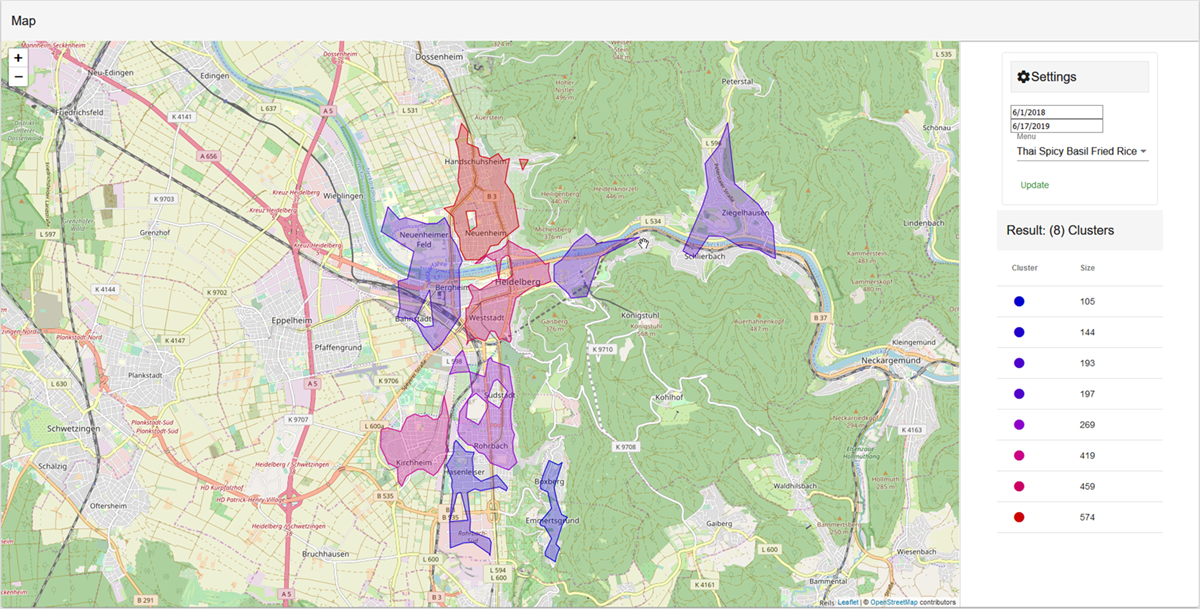
- SAP Community
- Products and Technology
- Technology
- Technology Blogs by SAP
- Introducing devonfw support for SAP HANA
Technology Blogs by SAP
Learn how to extend and personalize SAP applications. Follow the SAP technology blog for insights into SAP BTP, ABAP, SAP Analytics Cloud, SAP HANA, and more.
Turn on suggestions
Auto-suggest helps you quickly narrow down your search results by suggesting possible matches as you type.
Showing results for
Advisor
Options
- Subscribe to RSS Feed
- Mark as New
- Mark as Read
- Bookmark
- Subscribe
- Printer Friendly Page
- Report Inappropriate Content
06-17-2019
3:26 PM
What is devonfw?
devonfw is an open-source software reference architecture developed by the SAP partner Capgemini. It bundles standard open-source components such as Spring, Hibernate, Maven, QueryDSL, Flyway, Angular, and others to create a flexible, innovative, and high quality solution for writing applications.
The framework comprises modules for JavaScript, Java, and .Net. It also comes with an Eclipse-based IDE to simplify the installation, configuration and maintenance of the development environment.
There is also a demo application called My Thai Star that's build on top of the framework to act as a best-practice guide and showcase the framework's abilities. The scenario for the demo application is the web page of a Thai restaurant where customers can reserve tables, browse the menu, and order food.
What's new?
Over the last year, a joint team of developers from Capgemini and SAP have worked to add support for SAP HANA as an additional database for devonfw. But since HANA isn't just another database we didn't stop at adding basic support to the framework itself.
Instead we thought of use-cases for the My Thai Star demo application that would fit nicely into the restaurant scenario and could showcase the power of SAP HANA as well as give developers best-practices for developing their own applications using the advanced features of the SAP HANA platform.
Prediction of future demand
One scenario that could be useful for restaurant managers is the prediction of the demand in the near future to allow for accurate planning of needed supplies.
The first use-case implemented for the My Thai Star demo application does just that. It provides a planning screen for restaurant managers on which they can see the historical order data as well as the predicted demand for the next week based on the historical data.

Restaurant managers can choose the period shown for the historical data to find past time periods similar to the one of interest for the prediction. On the prediction panel they can dynamically adjust factors like temperature and whether a day is a public holiday to improve the prediction accuracy.

The prediction itself is implemented using the SAP HANA Predictive Analysis Library which offers a wide variety of prediction algorithms which are executed directly in the database.
Geospatial analysis and clustering of customers
The second scenario we have implemented is getting insight into the geographical distribution of customers. This allows restaurant managers to see where their customers come from and help them plan promotions or increase advertising in certain areas.
The use-case implemented for the My Thai Star demo application displays clusters of customers for each dish offered on the menu. Restaurant managers can then use the visualized information to better target their customers.

The spatial clustering is implemented using the SAP HANA spatial engine which includes spatial clustering out-of-the-box.
How can I get started?
devonfw provides its own documentation including a guide on how to get started on HANA.
Happy coding!
- SAP Managed Tags:
- SAP HANA,
- SAP HANA, express edition,
- SAP HANA, platform edition
Labels:
2 Comments
You must be a registered user to add a comment. If you've already registered, sign in. Otherwise, register and sign in.
Labels in this area
-
ABAP CDS Views - CDC (Change Data Capture)
2 -
AI
1 -
Analyze Workload Data
1 -
BTP
1 -
Business and IT Integration
2 -
Business application stu
1 -
Business Technology Platform
1 -
Business Trends
1,658 -
Business Trends
91 -
CAP
1 -
cf
1 -
Cloud Foundry
1 -
Confluent
1 -
Customer COE Basics and Fundamentals
1 -
Customer COE Latest and Greatest
3 -
Customer Data Browser app
1 -
Data Analysis Tool
1 -
data migration
1 -
data transfer
1 -
Datasphere
2 -
Event Information
1,400 -
Event Information
66 -
Expert
1 -
Expert Insights
177 -
Expert Insights
297 -
General
1 -
Google cloud
1 -
Google Next'24
1 -
Kafka
1 -
Life at SAP
780 -
Life at SAP
13 -
Migrate your Data App
1 -
MTA
1 -
Network Performance Analysis
1 -
NodeJS
1 -
PDF
1 -
POC
1 -
Product Updates
4,577 -
Product Updates
343 -
Replication Flow
1 -
RisewithSAP
1 -
SAP BTP
1 -
SAP BTP Cloud Foundry
1 -
SAP Cloud ALM
1 -
SAP Cloud Application Programming Model
1 -
SAP Datasphere
2 -
SAP S4HANA Cloud
1 -
SAP S4HANA Migration Cockpit
1 -
Technology Updates
6,873 -
Technology Updates
420 -
Workload Fluctuations
1
Related Content
- SAP Partners unleash Business AI potential at global Hack2Build in Technology Blogs by SAP
- Top Picks: Innovations Highlights from SAP Business Technology Platform (Q1/2024) in Technology Blogs by SAP
- CAP LLM Plugin – Empowering Developers for rapid Gen AI-CAP App Development in Technology Blogs by SAP
- Recap - SAP ALM at SAP Insider Las Vegas 2024 in Technology Blogs by SAP
- What’s New in SAP Analytics Cloud Release 2024.06 in Technology Blogs by SAP
Top kudoed authors
| User | Count |
|---|---|
| 37 | |
| 25 | |
| 17 | |
| 13 | |
| 7 | |
| 7 | |
| 7 | |
| 6 | |
| 6 | |
| 6 |